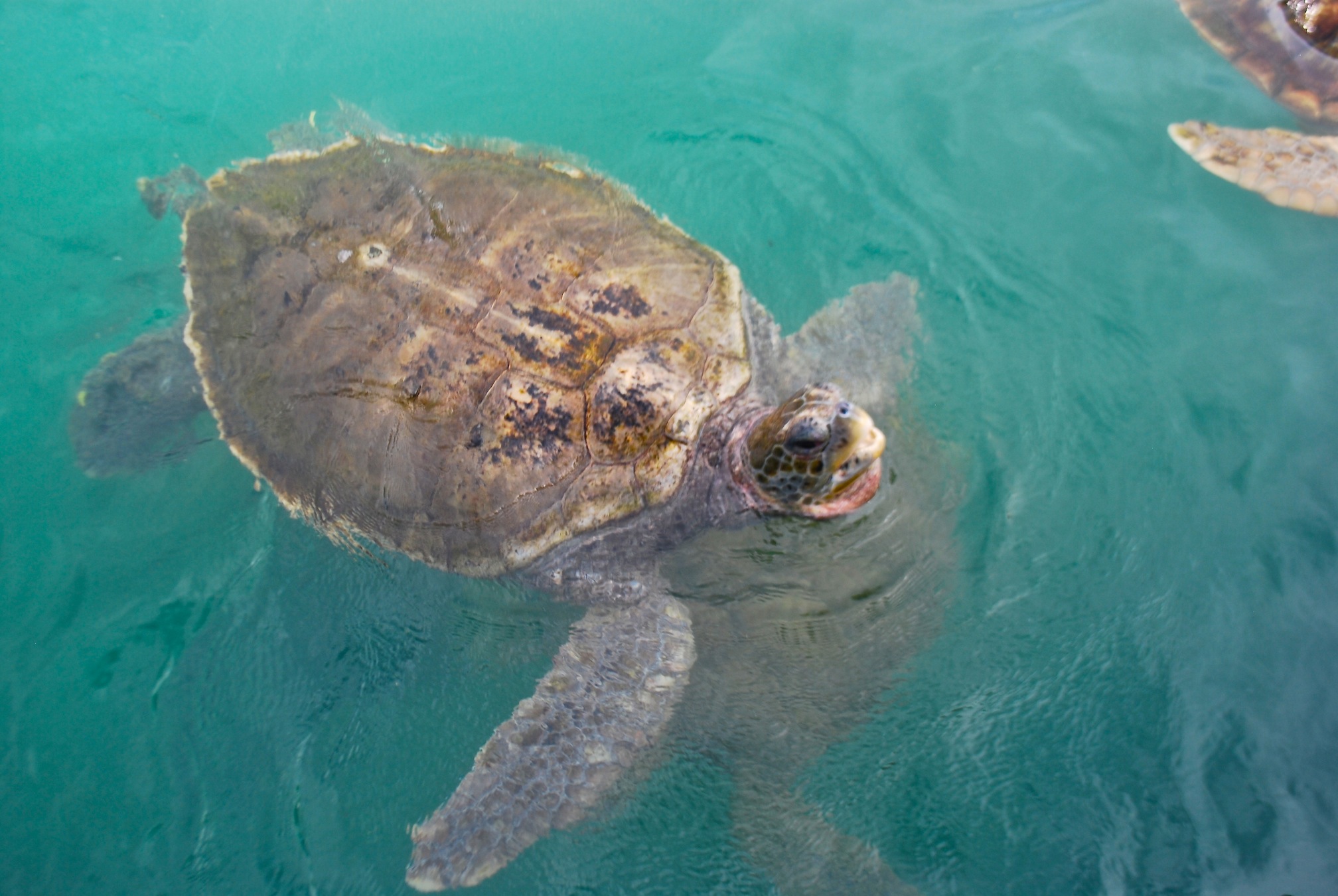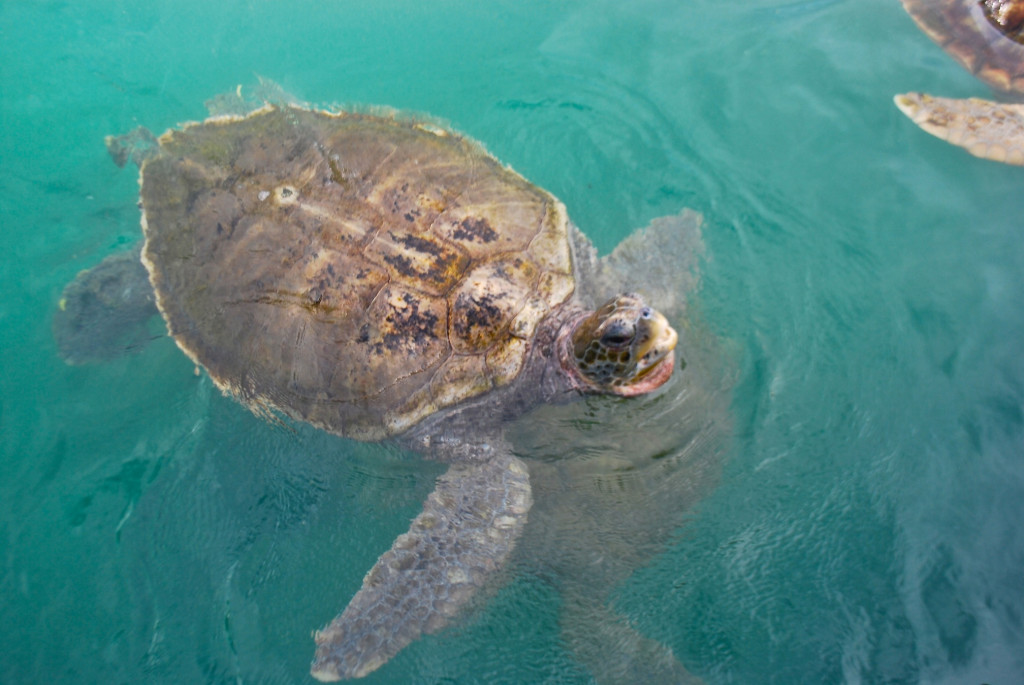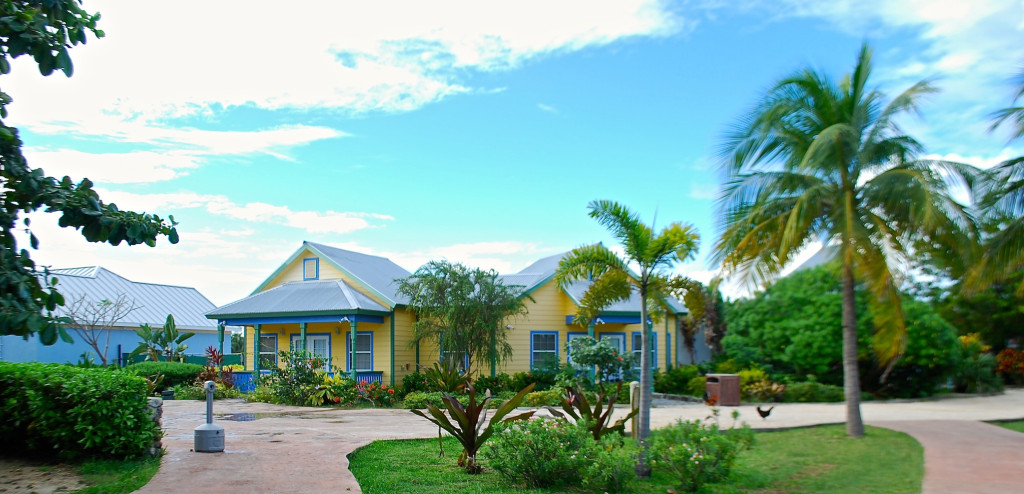I didn’t know turtles could be so much fun before we visited the Cayman Island Turtle Farm. They are large, enchanting creatures that live up to 150 years and can grow up to 600 pounds. They put all that weight on with a diet of sea grasses. At the Turtle Farm they eat three times a day; they crowd together and spout water through their noses when they do. You’re allowed to handle yearlings at the Touch Tanks. That was the real treat.
Benny, our guide, showed us how to hold a young turtle by the shell with both hands and 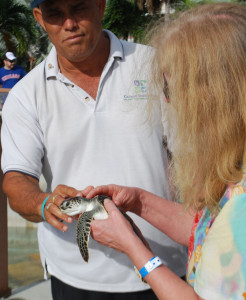 rub under its neck with your fingers at the same time. My once wriggling little ball of flapping fins was transformed into a docile, contented little tyke. I felt like a turtle whisperer.
rub under its neck with your fingers at the same time. My once wriggling little ball of flapping fins was transformed into a docile, contented little tyke. I felt like a turtle whisperer.
It’s also fascinating to see them in the many “ponds,” where young turtles in different stages of development hang out together.
When sighting Little Cayman and Cayman Brac in 1503, Columbus was struck by the 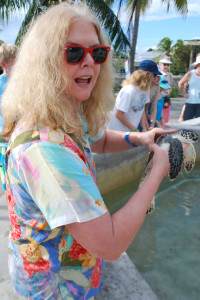 abundance of green sea turtles in the surrounding waters, and so the Cayman Islands were first called Las Tortugas (The Turtles). In 2004 the green sea turtle was listed as an endangered species, and the turtle farm is a major conservation effort and the only one of its kind in the Caribbean.
abundance of green sea turtles in the surrounding waters, and so the Cayman Islands were first called Las Tortugas (The Turtles). In 2004 the green sea turtle was listed as an endangered species, and the turtle farm is a major conservation effort and the only one of its kind in the Caribbean.
We also met Sparky, the grande dame of the farm; a 65-year old female who laid 25,684 eggs during her long reproductive years, and now hangs out in a tank with the little ones in her retirement. (I wonder what she’s telling them?!)
Over 31,000 turtle have been successfully released into the wild from here. The educational center explains the history and development of the farm’s hatchery and release programs. Another mascot is the famous Sir Thomas Turtleton, who was released (with a tracking devise) after 30 years at the farm and made it all the way down to Honduras.
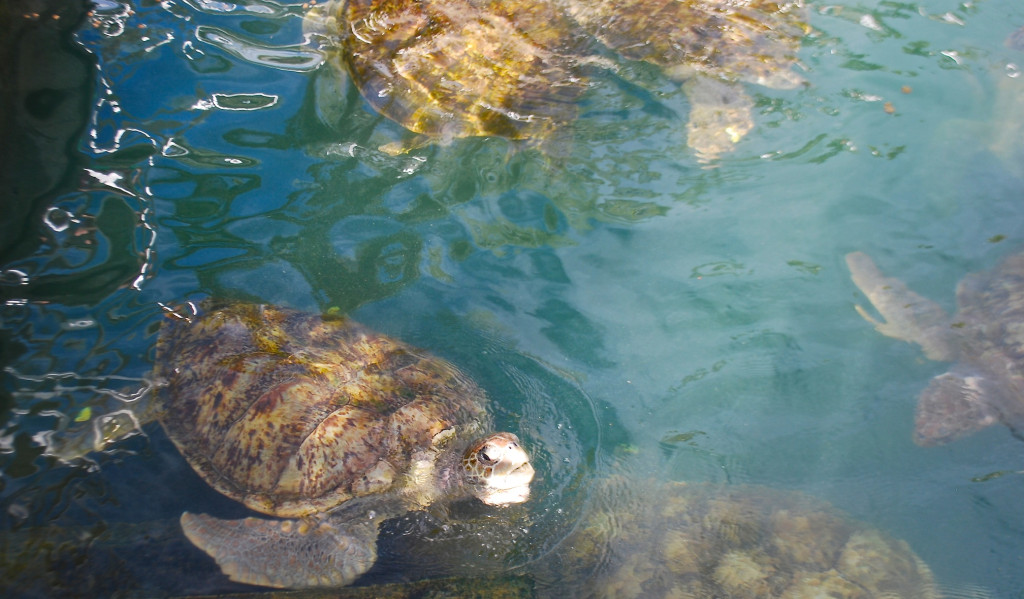
Over the years this unique park has added meandering garden trails and multiple exhibits about Cayman heritage, wildlife and island ecosystems. You can swim in Breaker’s Lagoon and hide under its cascading falls; snorkel in the salt-water Boatswain’s Lagoon, which meanders though the property and contains a rich sampling of coastal sea life. Get a thrill in front of the viewing panels that reveal Predator Reef where you’ll see barracudas, tarpons, and grey sharks that glide ominously on the prowl.
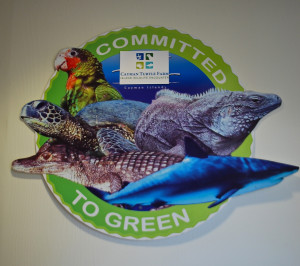 In the aviary there are birds from all over the Caribbean. The Cayman Islands’ National Bird is the Green Parrot and they like to squawk. The small busy colorful Honey Creepers might fly over your head, and the striking Scarlet Ibis; the National Bird of Trinidad certainly made its presence known.
In the aviary there are birds from all over the Caribbean. The Cayman Islands’ National Bird is the Green Parrot and they like to squawk. The small busy colorful Honey Creepers might fly over your head, and the striking Scarlet Ibis; the National Bird of Trinidad certainly made its presence known.
Cayman cultural and social life is also part of this “farm.” In fact, the wooden rafters of the high ceiling in the reception building are reminiscent of the ribs of an upside-down catboat, a traditional boat used by local fisherman. Cayman Street, a street with replicas of Caymanian wooden houses, complete with the “caboose,” an outdoor kitchen.
Some people call this place a marine park, others a living museum, and still others a zoo. 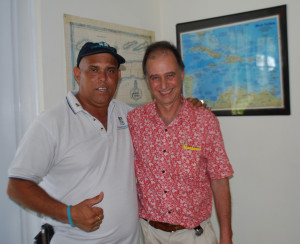 Caymaninas call it the Turtle Farm, and you can see why they love their turtles and are devoted to their conservation and their island ecosystem.
Caymaninas call it the Turtle Farm, and you can see why they love their turtles and are devoted to their conservation and their island ecosystem.
